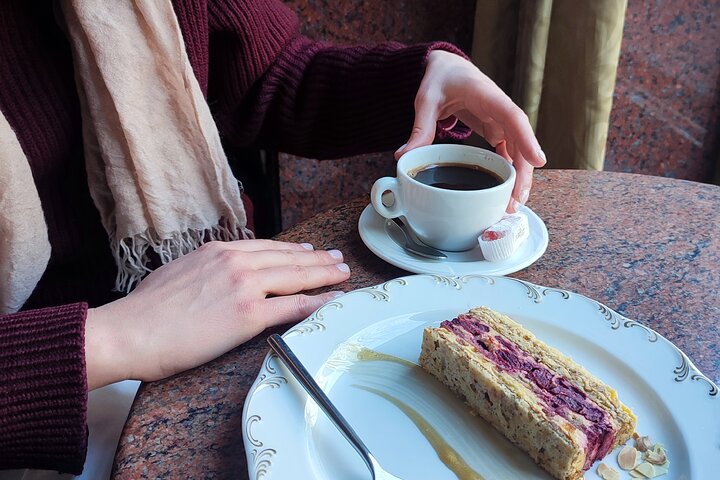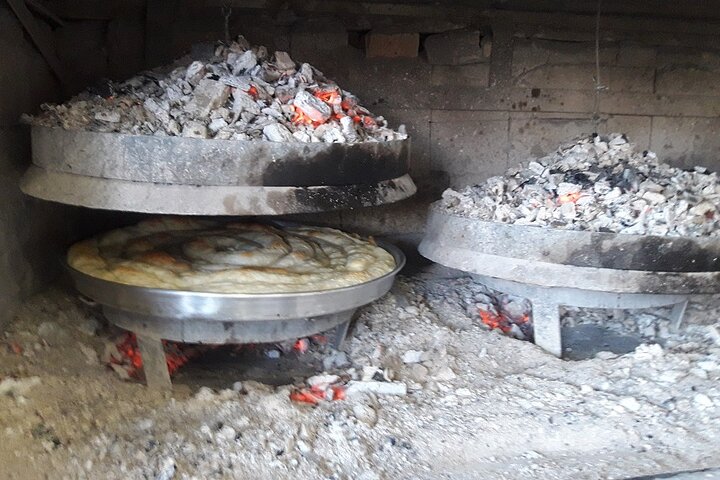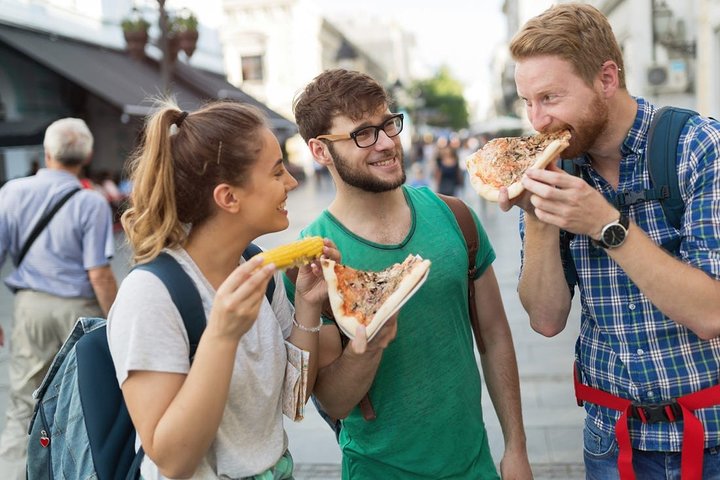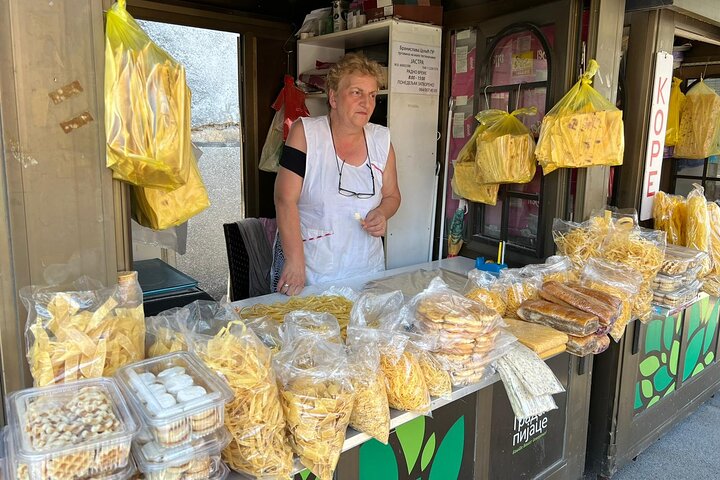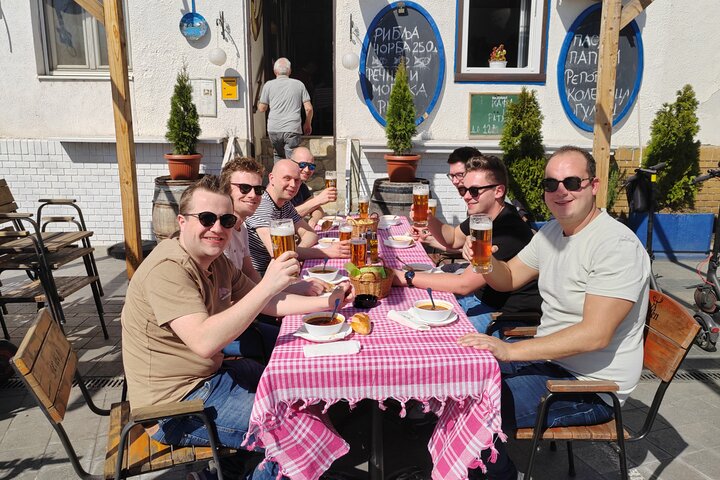Serbia Street Food Tours – Discover Bold Flavors & Local Favorites
Serbian street food is like a warm hug wrapped in flaky pastry – it’s comfort food that tells the story of a nation through every bite. From the bustling cobblestone streets of Belgrade to the charming squares of Novi Sad, Serbia’s culinary landscape pulses with flavors that have been perfected over generations. Whether you’re drawn to the smoky aroma of grilled meats wafting from corner stalls or the golden layers of freshly baked burek, there’s something magical waiting around every corner.
Serbia street food tours offer the perfect gateway into this delicious world, connecting you with local flavors, stories, and the people who’ve been crafting these dishes for decades. It’s food tourism at its most authentic – no fancy restaurants, just pure, unadulterated taste that captures the heart of Balkan cuisine.
The World of Pubs and Taverns: A Golden Mile
Discover Belgrade’s authentic pub culture with local experts who know where Belgradians truly drink.
Key Takeaways
- Serbia’s street food scene offers bold Balkan flavors and authentic local eats
- Must-try dishes include ćevapi, pljeskavica, burek, and rakija tastings
- Street food tours let you sample Belgrade’s markets, kiosks, and family-run stalls
- Most tours are walking-based with local guides who know the tastiest hidden gems
- Scroll up to explore Serbia street food tours you can book instantly

Why Explore Serbian Street Food with a Tour
Navigating Serbia’s street food scene solo can feel overwhelming, especially when you’re faced with Cyrillic menus and unfamiliar dish names. That’s where guided tours become your culinary compass, leading you straight to the gems that locals have been treasuring for years.
A good street food tour doesn’t just feed you – it educates you. Your guide becomes your cultural translator, explaining why ćevapi is more than just grilled meat, or how the preparation of burek varies from region to region. These tours take the guesswork out of ordering and ensure you’re not missing out on must-try dishes that might be hiding in plain sight.
Most importantly, tours provide a safe and comfortable way to explore. Your guide knows which vendors maintain the highest standards, which stalls serve the freshest ingredients, and which hidden corners of the city offer the most authentic experiences. It’s like having a local friend show you around – except this friend happens to know all the best places to eat.
For solo travelers, tours offer instant community. Food has this amazing ability to bring people together, and sharing a plate of warm ćevapi with fellow travelers often leads to the kind of connections that make trips memorable. Group tours also tend to get better access to certain vendors and can sometimes arrange special tastings that wouldn’t be available to individual visitors.
What You Might Taste on a Street Food Tour
Ćevapi – These aren’t just any grilled sausages. Picture perfectly seasoned, finger-sized cylinders of minced meat, chargrilled to smoky perfection and nestled in soft, pillowy bread called lepinja. They’re typically served with diced onions and a generous dollop of kajmak (Serbian cream cheese) that melts slightly from the heat. Each bite delivers that perfect balance of smoky meat, creamy richness, and fresh bread.
Pljeskavica – Think of this as Serbia’s answer to the burger, but with so much more character. This hand-formed patty is made from a blend of meats, grilled over open flames until it develops a beautiful crust while staying juicy inside. It’s often served in lepinja bread with fresh vegetables, kajmak, and ajvar – creating a flavor explosion that puts most burgers to shame.
Burek – This flaky pastry is an art form wrapped in golden layers. Made with paper-thin phyllo dough and filled with cheese, meat, or sometimes spinach, burek is crispy on the outside and creamy on the inside. The best versions come from small bakeries where they’re made fresh throughout the day, and you’ll often see locals queuing up for their morning burek fix.
Ajvar & Kajmak – These two condiments are the dynamic duo of Serbian cuisine. Ajvar is a smoky, slightly sweet spread made from roasted red peppers, while kajmak is a rich, tangy cream cheese that’s somewhere between sour cream and fresh cheese. Together, they elevate everything from bread to grilled meats.
Rakija – No Serbian food experience is complete without sampling this potent fruit brandy. Often offered as a welcome drink or palate cleanser, rakija comes in various fruit flavors – plum being the most traditional. It’s strong, warming, and deeply connected to Serbian hospitality culture.
Sweet Treats – Don’t miss krofne (Serbian donuts) filled with jam or chocolate, or palačinke (thin crepes) that can be stuffed with everything from Nutella to fresh fruit. These sweet endings to your food tour provide the perfect balance to all those savory flavors.

Where to Enjoy Street Food in Serbia
Belgrade stands as Serbia’s undisputed street food capital, where centuries of culinary tradition meet modern food culture. The city’s heart beats strongest at Zeleni Venac market, where vendors have been serving locals for generations. Here, you’ll find everything from fresh produce to prepared foods, all buzzing with the energy of daily life.
The bohemian quarter of Skadarlija transforms into a food lover’s paradise after dark, with its cobblestone streets lined with grills and small eateries. Along the Danube and Sava rivers, waterfront kiosks serve late-night snacks to locals and visitors alike, creating a relaxed atmosphere where food and conversation flow freely.
Novi Sad offers a unique blend of Austro-Hungarian influences mixed with traditional Balkan flavors. The city’s main square and surrounding streets feature charming food stalls and small restaurants that reflect this cultural fusion. The annual EXIT festival also brings special food vendors and creates a vibrant street food scene during summer months.
Niš, Serbia’s third-largest city, is renowned for its spicier take on traditional dishes. The local street food scene here tends to pack more heat, with vendors who’ve perfected recipes that reflect the city’s position as a crossroads between different culinary traditions.
Throughout Serbia, farmers markets and seasonal food festivals provide excellent opportunities to sample street food alongside local produce. These events often feature regional specialties and allow you to experience how street food varies across different parts of the country.
Frequently Asked Questions
Q: Do I need to speak Serbian to join a food tour?
A: Not at all! Most tours are conducted in English with bilingual guides who can translate menus and communicate with vendors for you.
Q: Are vegetarian options available on Serbia street food tours?
A: Some options exist, but Serbia’s street food is heavily meat-focused. Key vegetarian dishes include:
- Burek sa sirom (cheese-filled pastry)
- Various grilled vegetables
- Sweet treats like palačinke Always check with tour providers about vegetarian accommodations.
Q: Is it safe to eat street food in Serbia?
A: Yes! Serbia maintains high food safety standards, and reputable vendors follow strict hygiene practices. Tour guides know which stalls maintain the best standards.
Q: Can I join a tour if I have food allergies?
A: Many tours can accommodate dietary restrictions if you inform them in advance. Common considerations:
- Gluten-free options may be limited
- Dairy allergies can be challenging due to kajmak and cheese
- Always discuss specific allergies with your tour provider
Q: Are street food tours family-friendly?
A: Most tours welcome families, but consider:
- Spice levels may be too intense for young children
- Tours involve significant walking
- Some venues may serve alcohol
- Check age restrictions with individual tour operators
Q: How much should I budget for a street food tour?
A: Typical costs range from €25-60 per person, usually including:
- All food tastings
- Beverages (sometimes including rakija)
- Professional guide services
- Market visits and cultural insights
Q: What’s the best time of day for a street food tour?
A: Most tours run during lunch or early evening when:
- Food is freshest
- Markets are most active
- Weather is comfortable for walking
- Vendors have the fullest selection available
Serbia’s street food scene represents the perfect blend of tradition and flavor – and exploring it on foot lets you dive straight into the culture. Whether you’re sampling sizzling ćevapi, sipping strong rakija, or biting into buttery burek, every bite tells a story of resilience, hospitality, and culinary pride. The tours above offer your gateway to this delicious world, connecting you with authentic flavors and the passionate people who create them daily.


